Oak Creek Canyon
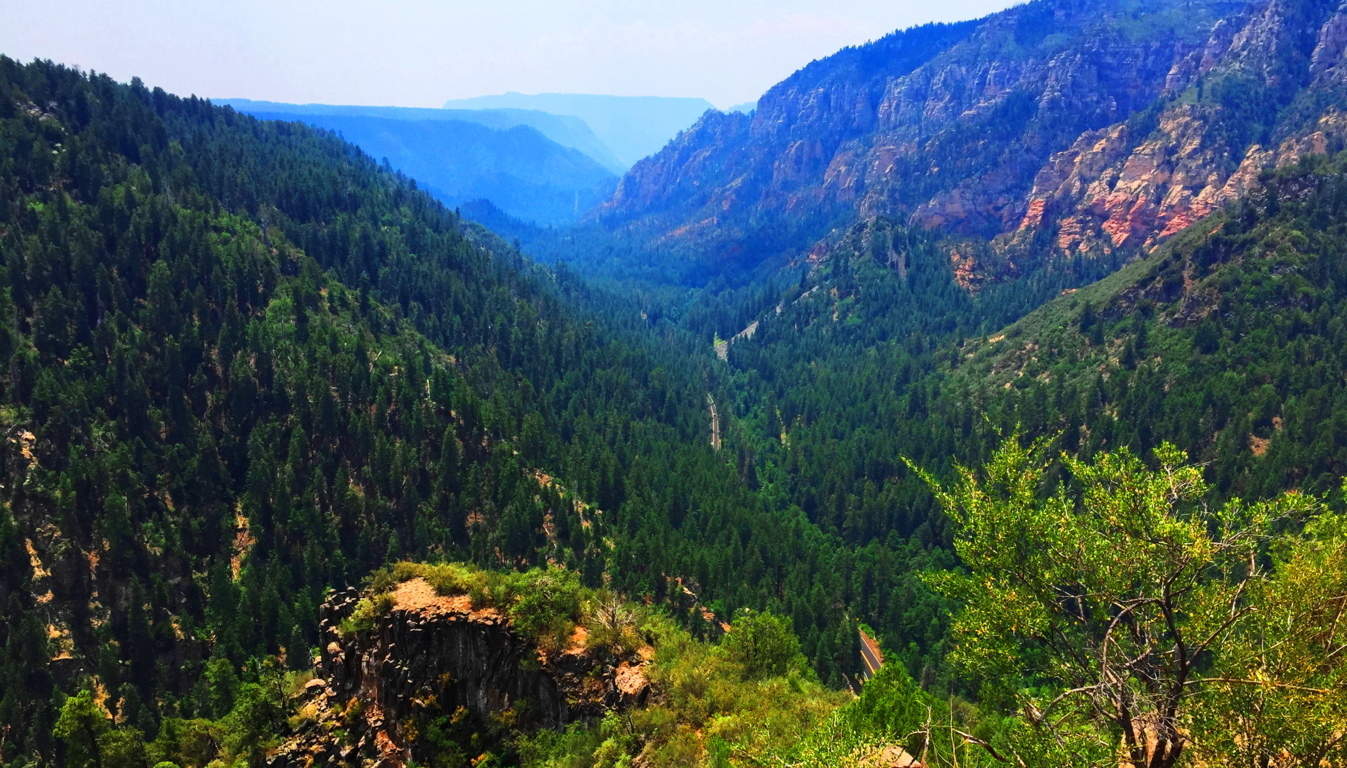
Location: Oak Creek Canyon/Arizona/USA
Elevation: 7,200 ft.
Note: The majestic Oak Creek Canyon is as much an expedition as it is a unique hike, even by international standards. It’s an achievement just to commit to this adventure, which is located in a massive 16 mile crevasse beneath the dramatically elevated Ranges of Sedona and Flagstaff in the great State of Arizona/USA. This may be the most popular hike in all of Arizona, which is less extreme than the Grand Canyon, and more accessible, with beautiful Coconino forestry surrounding the rocky trails running along the surreal stony tributary of the Verde River. This is another photographic paradise, where the curvatures and contrasting colors of the Canyon create the feeling of a rocky oasis; a secret cavernous fortress; a brilliant natural hideaway which has protected the precious stream that has flowed here since the receding of the last ice age, some 21,000 years ago. 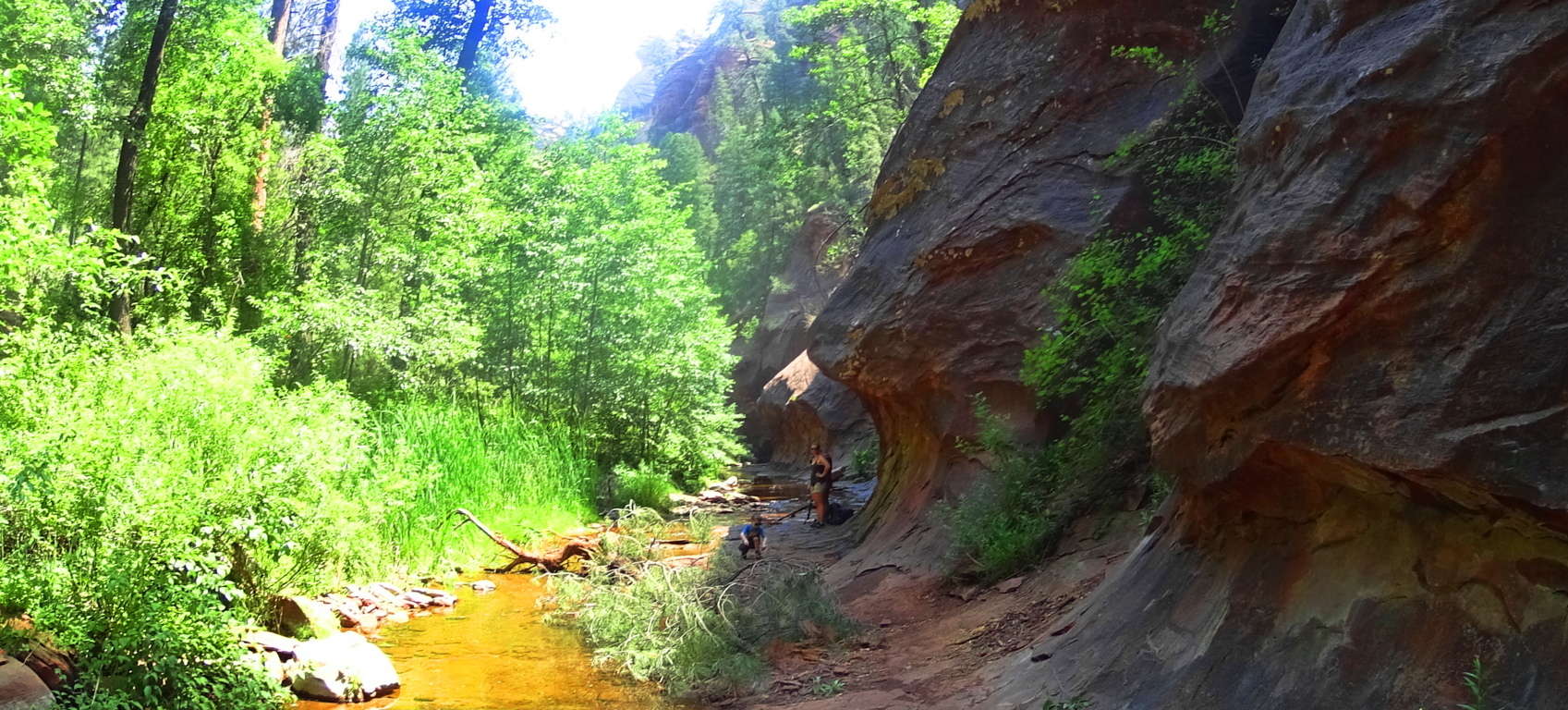
Route 89A runs dramatically into the base of the Canyon, twisting and turning along ledges that will require careful driving. Like the N71 that stretches across Killarney National Park in Ireland, or the A82 that cuts through the natural gateway to the Highlands in Scotland, 89A in Arizona has the potential to be one of the most dramatic drives of your life. Upon reaching the central base of the Canyon there is a toll with a small entry fee, along with an active parking lot. In this part of the world ‘climate conscious’ strategies should be practiced carefully in order to insure an engaging and healthy quest into the Canyon. Most importantly, for a hike in this region, is an early arrival, which insures the coolest possible temperature for your excursion, as well as the best odds for parking inside the reserve. If the parking Lot is full, which could well be the case by 8:30 a.m, most of the remaining gregarious trailblazers will attempt to park along the base of the 89A roadside ledge, which is certainly possible, but dangerous. Start early and increase your odds for a great and seamless experience.
The first vision of Oak Creek Canyon is of a domineering rock-tsunami of glowing golden stone that stretches for miles in each direction. 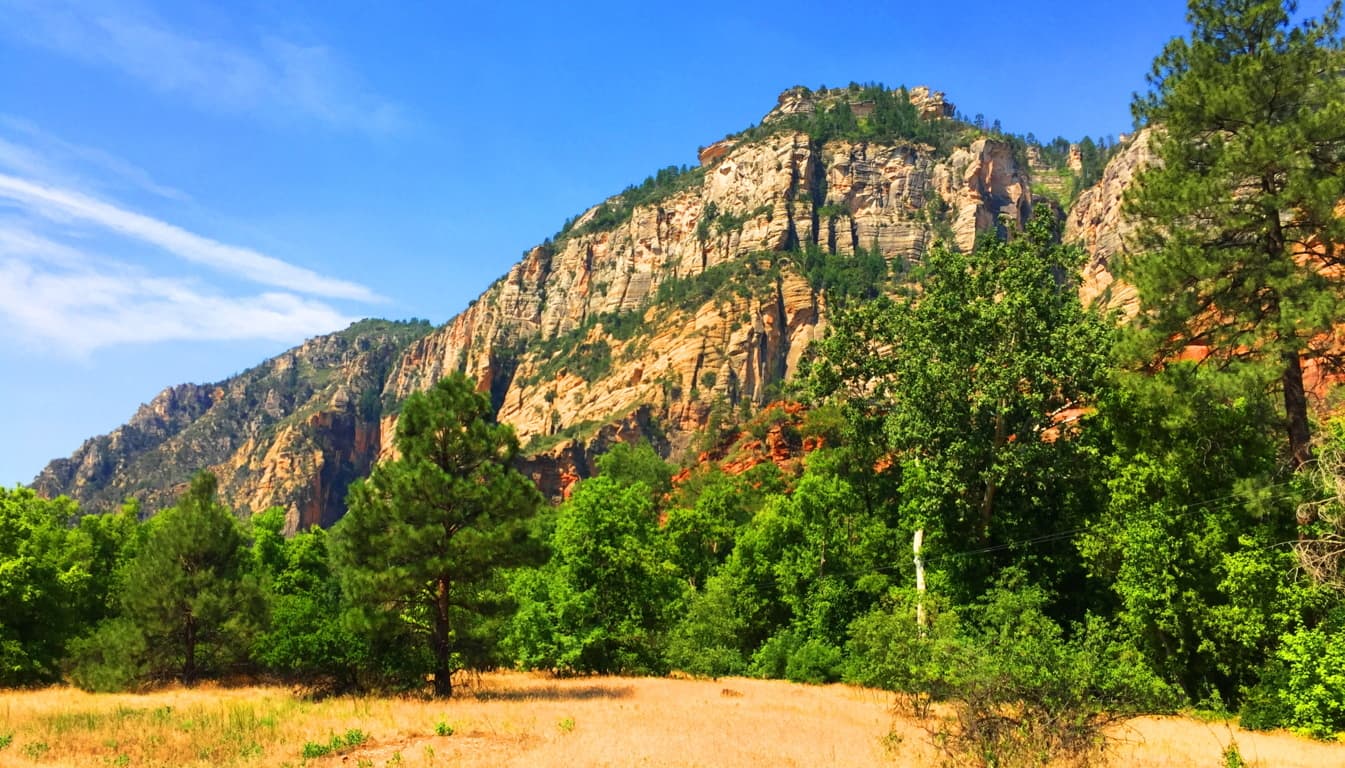
After crossing the main entry bridge, the Oak Creek trail branches off into several alternate options, each with varying ability levels.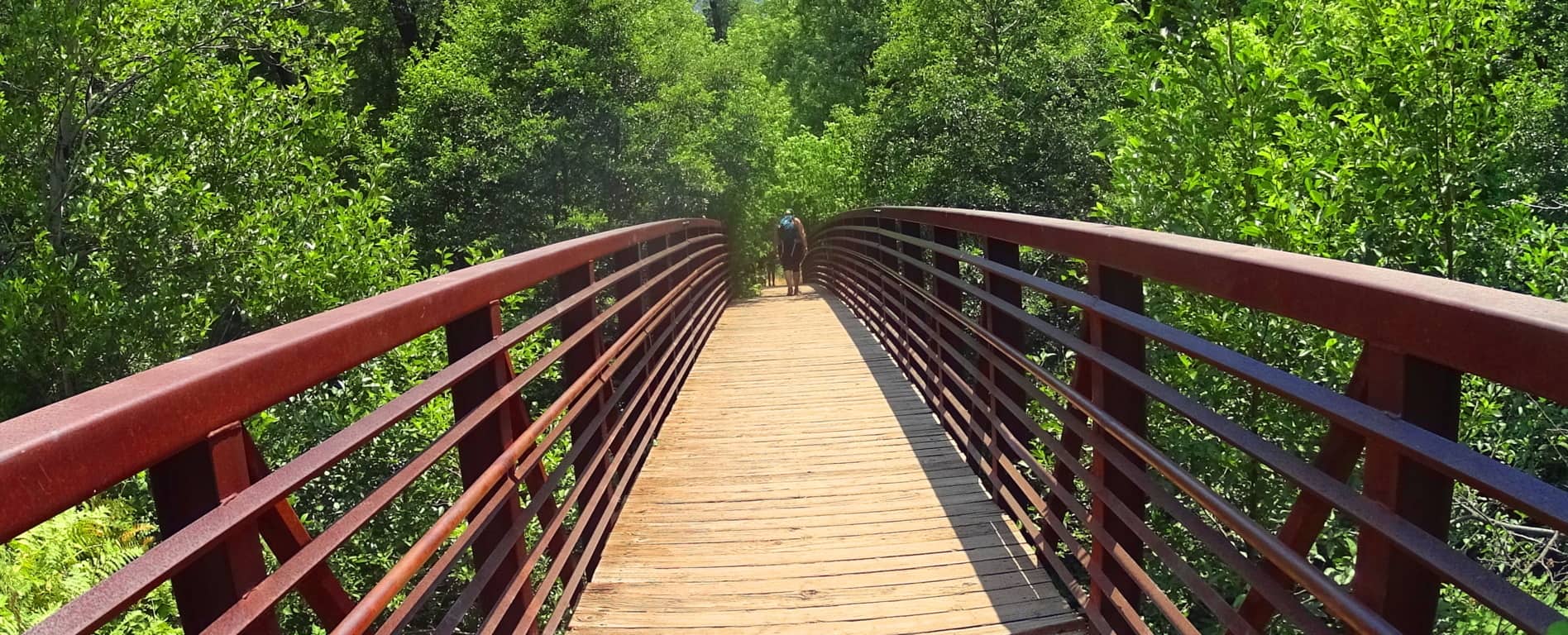 The initial trail follows the flow of the Verde River to the north, where dramatic caverns emerge like tunnels carved out of the rock-face, funneling a seemingly miraculous flow of water. On the right side of the initial trail is a rounded out rock cavern. This cavern is elevated with an entrance that is supported by stone-linings. These are similar to linings which can be found in New England and Ireland, although they are not a major feature throughout the trail here at Oak Creek. Additionally, there are several free standing boulders above the entrance way, and along the trail, which are often an indicator of something more than just natural “random rock” placement.
The initial trail follows the flow of the Verde River to the north, where dramatic caverns emerge like tunnels carved out of the rock-face, funneling a seemingly miraculous flow of water. On the right side of the initial trail is a rounded out rock cavern. This cavern is elevated with an entrance that is supported by stone-linings. These are similar to linings which can be found in New England and Ireland, although they are not a major feature throughout the trail here at Oak Creek. Additionally, there are several free standing boulders above the entrance way, and along the trail, which are often an indicator of something more than just natural “random rock” placement. 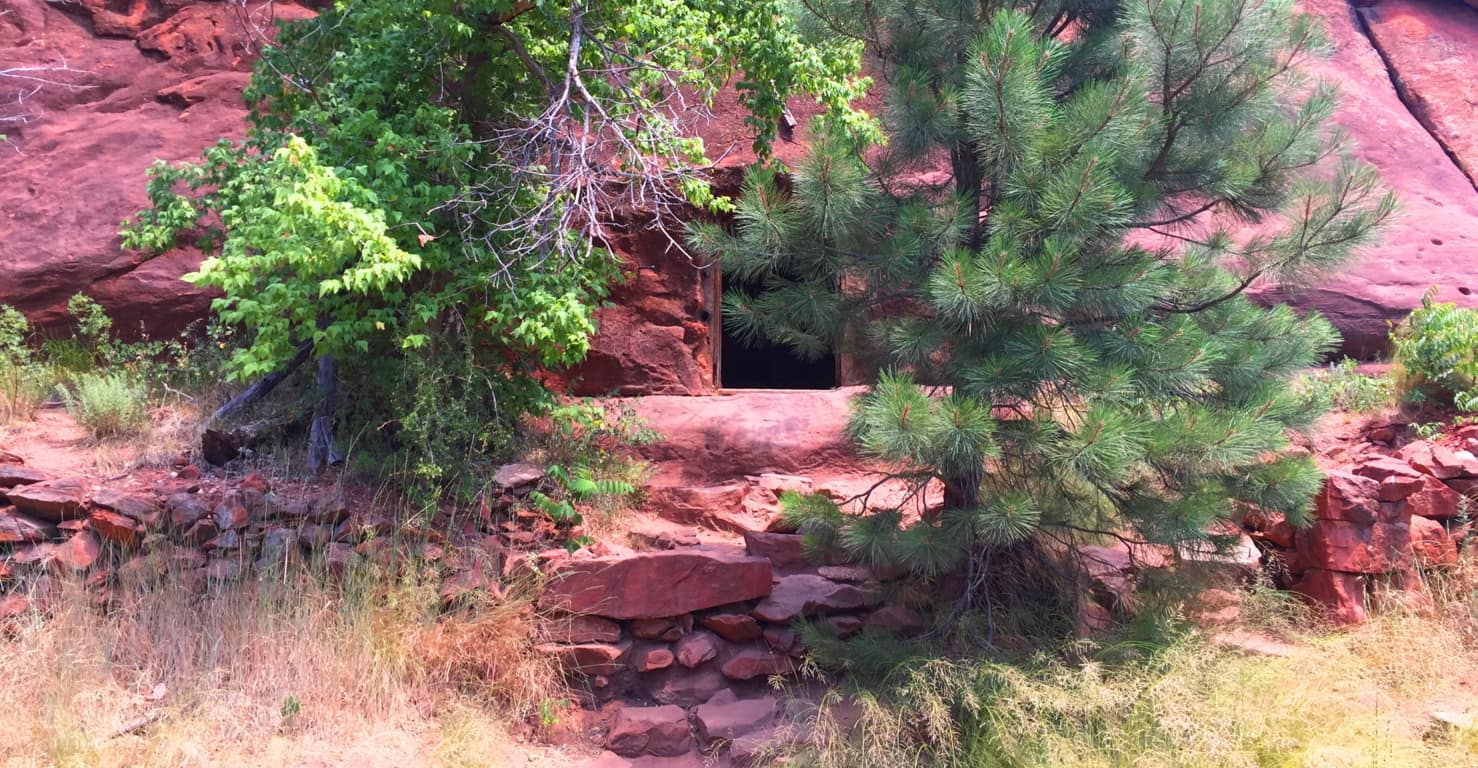 The interior of this cave is perfectly smooth. There are no signs of it being chipped away at with some kind of pick-axe or prehistoric chisel. Even more mysteriously is a perfectly square 4 foot shaft angled straight towards the sky, specifically along the outer canyon wall. This is very similar to the square shafts found in almost all the stone chambers in New England, as well as the Great Pyramid at Giza.
The interior of this cave is perfectly smooth. There are no signs of it being chipped away at with some kind of pick-axe or prehistoric chisel. Even more mysteriously is a perfectly square 4 foot shaft angled straight towards the sky, specifically along the outer canyon wall. This is very similar to the square shafts found in almost all the stone chambers in New England, as well as the Great Pyramid at Giza.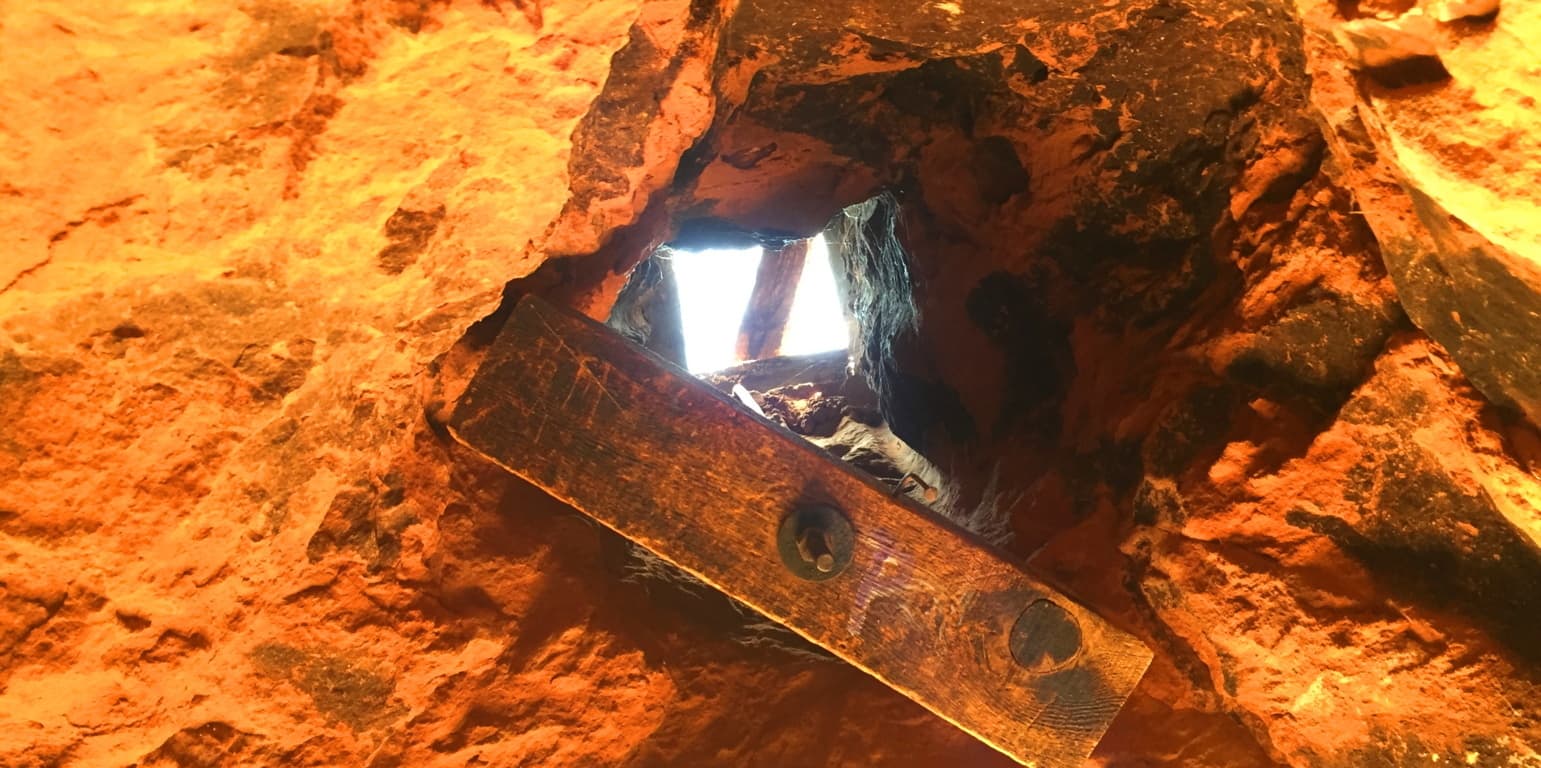 These shafts often point to the Sun at a specific point on the skyline, and more specifically, to the Winter or Summer solstices, which are moments that will flash dramatically through the shaft at that specific moment of the year. This also exists at New Grange in Ireland, the oldest megalithic temple in the world. How could a primitive native culture cut a perfectly square shaft through 4 feet of solid rock? While considering this question, observe the dramatic view from the cavern, which is truly a wonder.
These shafts often point to the Sun at a specific point on the skyline, and more specifically, to the Winter or Summer solstices, which are moments that will flash dramatically through the shaft at that specific moment of the year. This also exists at New Grange in Ireland, the oldest megalithic temple in the world. How could a primitive native culture cut a perfectly square shaft through 4 feet of solid rock? While considering this question, observe the dramatic view from the cavern, which is truly a wonder.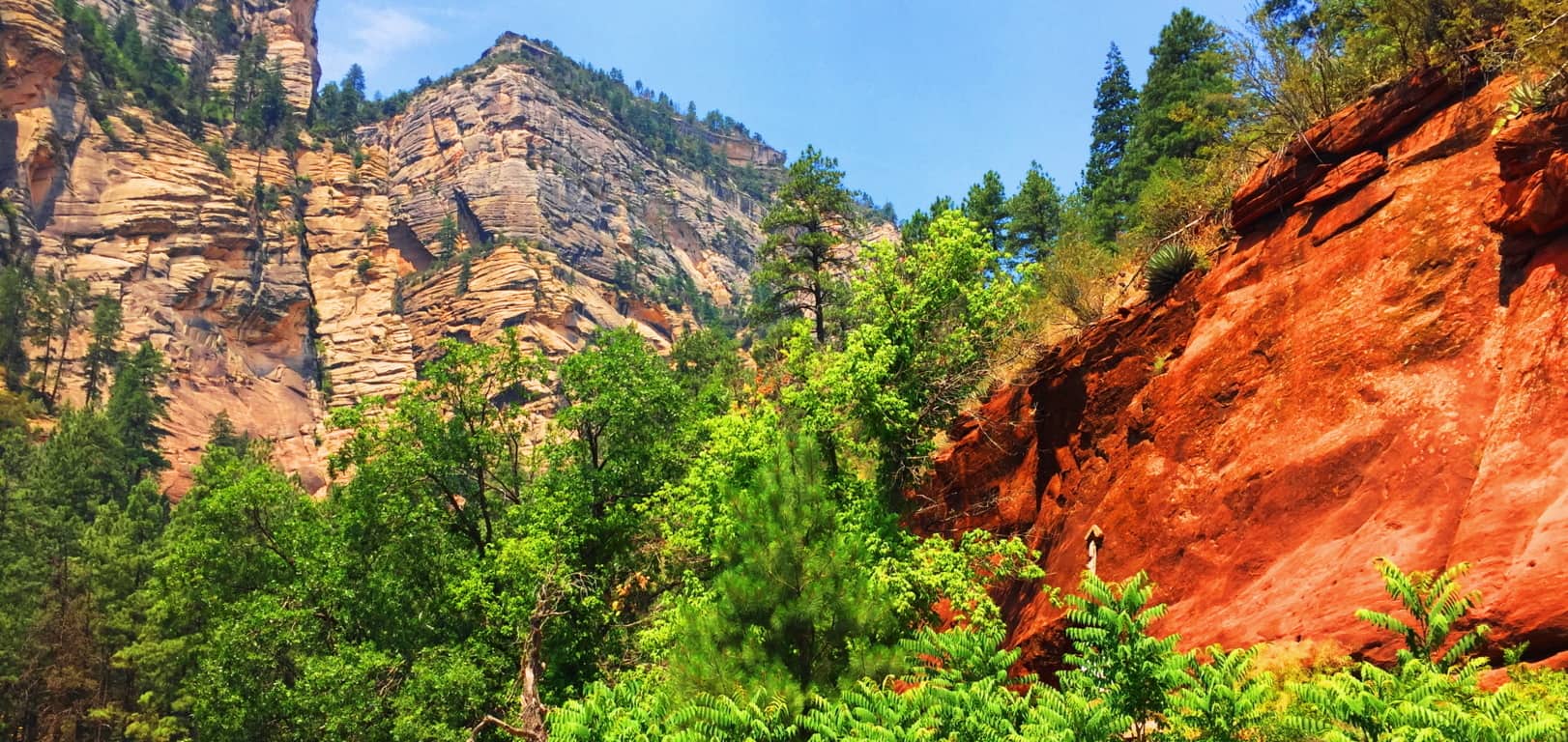 Moving on from this cave, the trail follows a stream into the deeper woods, and becomes an experience unlike any hike you’ve ever taken.
Moving on from this cave, the trail follows a stream into the deeper woods, and becomes an experience unlike any hike you’ve ever taken.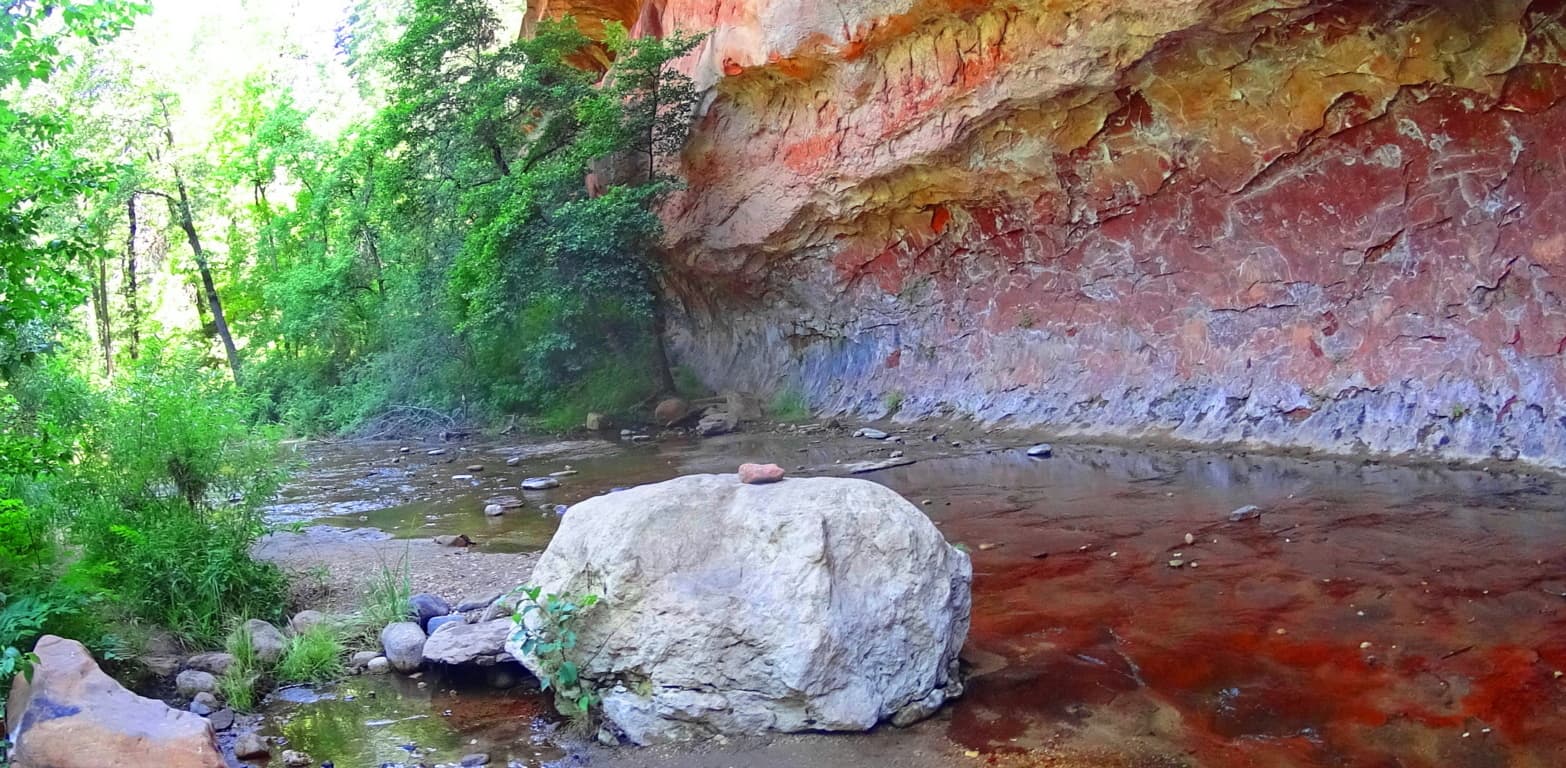 The trail extends back and forth over the rolling stream, leading into the deeper glens of the gorgeous Cococino Forest. There are free sitting boulders at each significant portion of the trail, seemingly and mysteriously assisting the hike. At some points the boulders indicate a scenic place, and at other points they indicate an actual direction on the trail. It is hard to ignore the specific placement of these boulders, and what it might indicate. What culture is capable of moving boulders above caverns and along rivers, and to specific points on the trails?
The trail extends back and forth over the rolling stream, leading into the deeper glens of the gorgeous Cococino Forest. There are free sitting boulders at each significant portion of the trail, seemingly and mysteriously assisting the hike. At some points the boulders indicate a scenic place, and at other points they indicate an actual direction on the trail. It is hard to ignore the specific placement of these boulders, and what it might indicate. What culture is capable of moving boulders above caverns and along rivers, and to specific points on the trails? 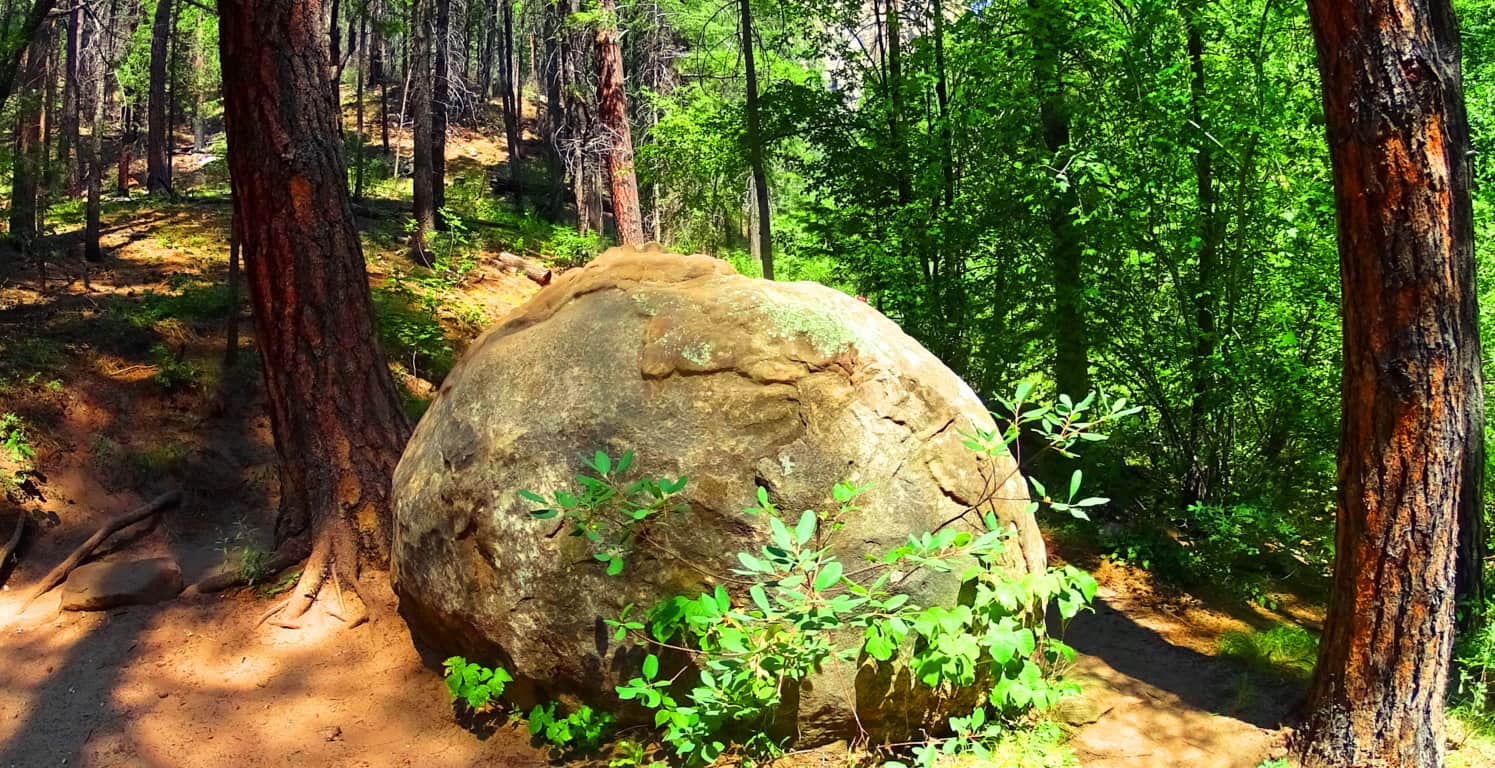 Continuing, this woodsy path quickly escalates into a humbling epiphany of enchanted woods. Oaks, Ash, Willows, Ponderosa Pines, and Cottonwoods burst broadly forth from the landscape, all surrounded by a red-rock coliseum of natural stone.
Continuing, this woodsy path quickly escalates into a humbling epiphany of enchanted woods. Oaks, Ash, Willows, Ponderosa Pines, and Cottonwoods burst broadly forth from the landscape, all surrounded by a red-rock coliseum of natural stone. 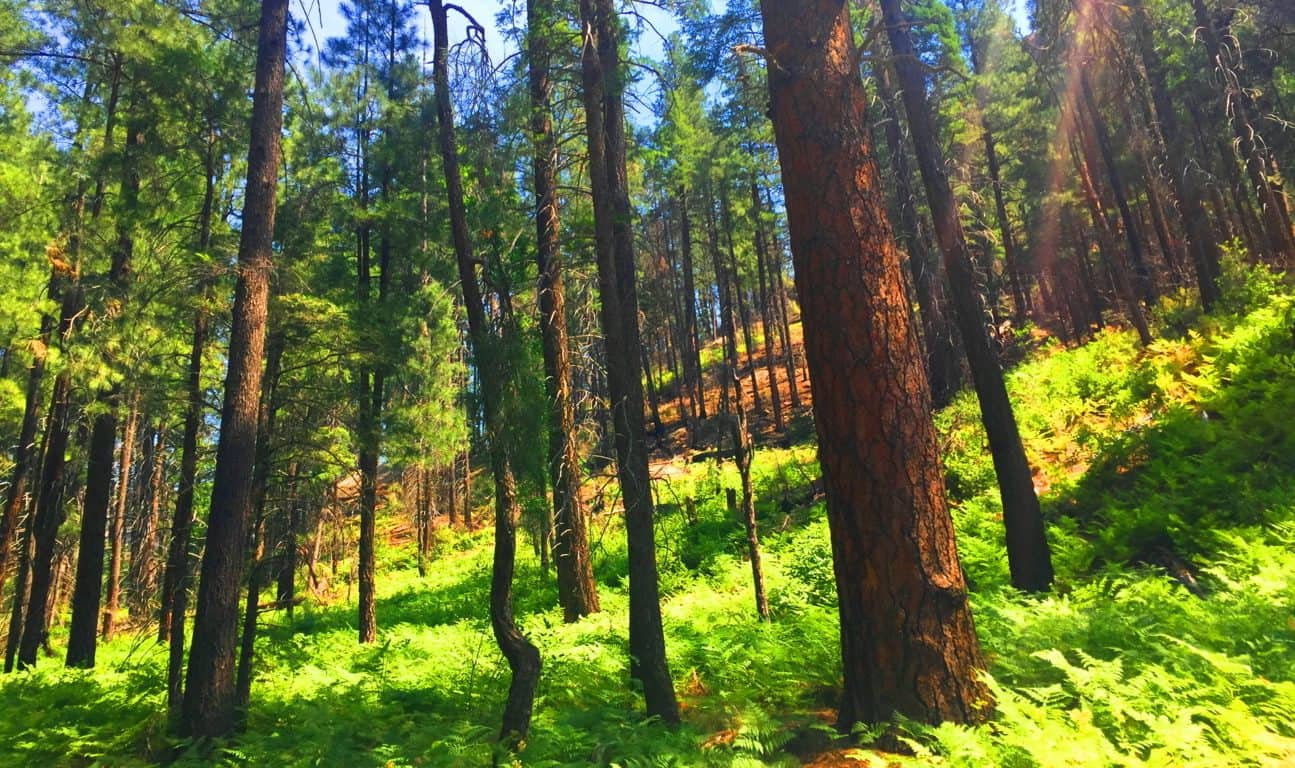 Heading north along this beautifully forested route you will encounter a feature of colossal level granite shelves that lead dramatically up the chasm like a massive set of porticos. The color of these ‘shelves’ is so in tune with the surrounding forest that you might actually mistake these curvy and knotted red-rock exteriors for fallen wood, but it most certainly is not. It is a testament to the original look of this ancient trail, where once upon a Time, the first Time, the rock was barren and uncovered by the forest, revealing it’s incredible original story. Just use your imagination and picture these giant steps climbing up the canyon in an incredibly broad way!
Heading north along this beautifully forested route you will encounter a feature of colossal level granite shelves that lead dramatically up the chasm like a massive set of porticos. The color of these ‘shelves’ is so in tune with the surrounding forest that you might actually mistake these curvy and knotted red-rock exteriors for fallen wood, but it most certainly is not. It is a testament to the original look of this ancient trail, where once upon a Time, the first Time, the rock was barren and uncovered by the forest, revealing it’s incredible original story. Just use your imagination and picture these giant steps climbing up the canyon in an incredibly broad way!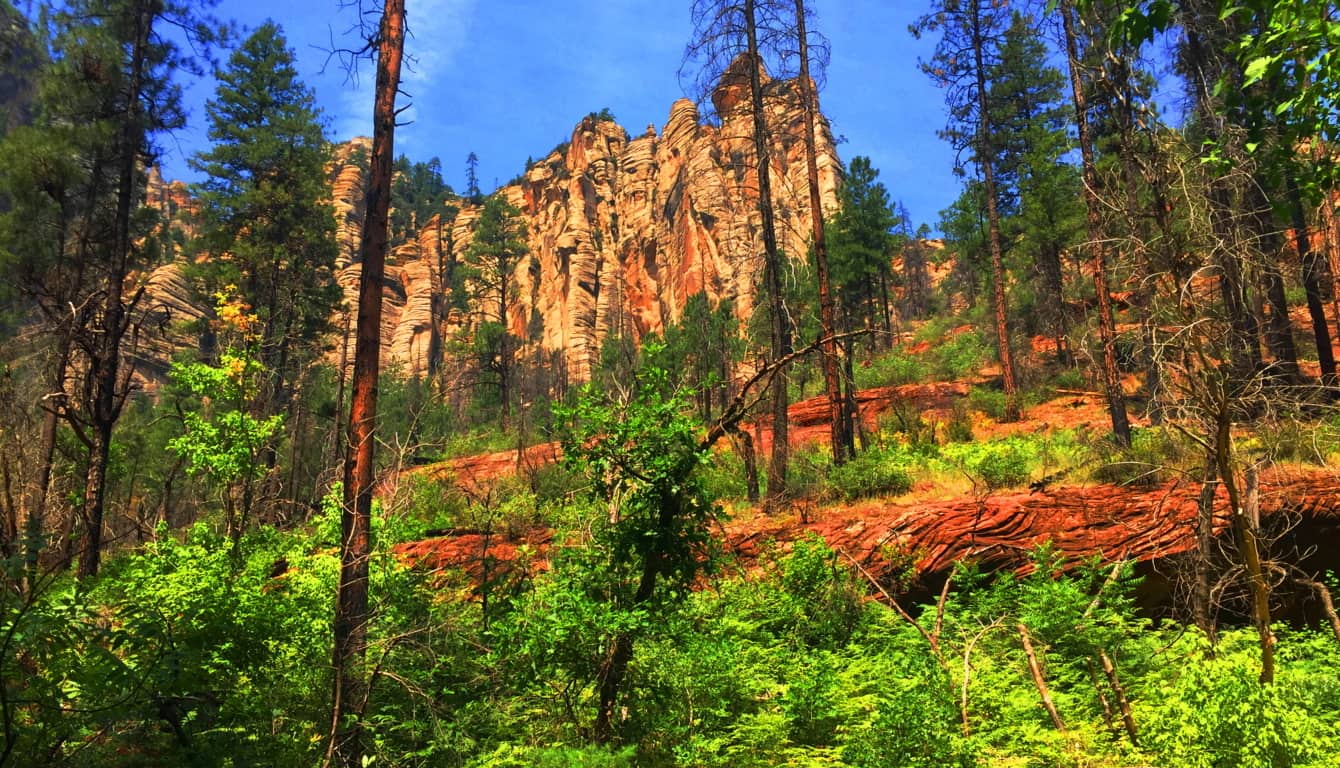
This is a truly magical trail complete with brilliantly bright butterflies, dragonflies, fields of wildflowers, and gigantic trees.  The rolling of the stream along the path creates a wind-tunnel that is invigorating, especially in such a dry climate. Feel free to jump in the water here, or perhaps picnic for the day. There are trailblazers of all ages climbing, hiking, and splashing through the woods. The protective feeling of the massive chasm of rock all around you creates a wonderful experience. The Native Americans considered this canyon absolutely sacred, and it is easy to see why. It’s a magical hideaway with miraculous qualities which could sustain a tribes existence with surprising sustenance, as well as profound beauty. Make the best preparations you can and explore this incredible place. Get a true taste of the southwestern American trail experience! And finally, welcome to the newest season of Stonestrider.com! There are some incredible and mysterious new surprises to be revealed here publically for the first time in the coming articles! Seek and find.
The rolling of the stream along the path creates a wind-tunnel that is invigorating, especially in such a dry climate. Feel free to jump in the water here, or perhaps picnic for the day. There are trailblazers of all ages climbing, hiking, and splashing through the woods. The protective feeling of the massive chasm of rock all around you creates a wonderful experience. The Native Americans considered this canyon absolutely sacred, and it is easy to see why. It’s a magical hideaway with miraculous qualities which could sustain a tribes existence with surprising sustenance, as well as profound beauty. Make the best preparations you can and explore this incredible place. Get a true taste of the southwestern American trail experience! And finally, welcome to the newest season of Stonestrider.com! There are some incredible and mysterious new surprises to be revealed here publically for the first time in the coming articles! Seek and find.
Heath Altar Stones
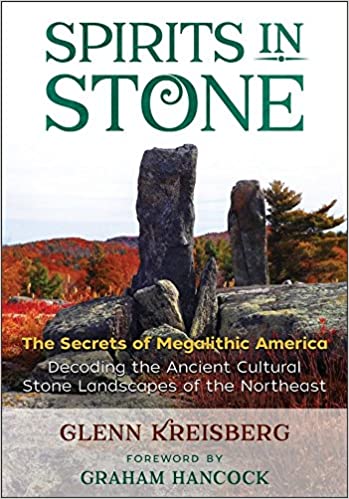 Loc
Loc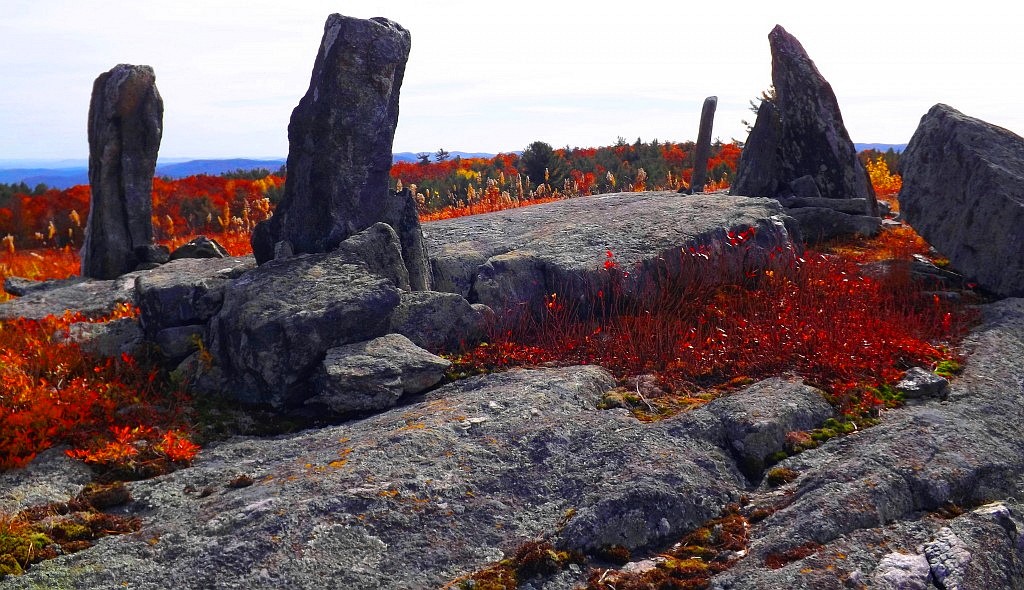 ation: Town of Heath, Massachusetts/USA
ation: Town of Heath, Massachusetts/USA
Note: The Heath Altar is an incredible Megalithic Period statement, set squarely at the top of a quartz riddled hill, in the town of Heath, in Western Massachusetts. When I took the photograph for the cover of Glenn Kreisberg’s interesting book about ‘Megalithic America’, I did so on my own, without asking permission. I did this because I believe that the Heath Altar is a National Heritage Site, not a rock-pile to be guarded by “KEEP OUT OR GET SHOT’ signs of some old and bitter son-of-a-bitch, in his rocking chair. If any researchers have a problem with this action that I took, get in touch with me via: jpv@stonestrider.com, and we can talk, face to face. Otherwise, grow some balls, and do the work yourself. And check out the book, its an important work for people interested in this megalithic thing’;)
Sad Note About America: America has become a scary place, filled with control freak legislators and rule makers, and Facebook-tough-guys, with a spineless, utterly malleable population of cowards, and forgetful bots, that literally no longer think for themselves, or challenge any authority or narratives. These researchers now talk about me on their corny, stuffy, presumptive websites, and on Facebook, like schoolgirls. Well guess what, local Massachusetts researchers who have never taken a single chance for their research, or ever climbed a single mountain, or spoken with a single farmer in the fields; I’m not waiting around for your dueschbag approval, or anyone else’s, for that matter. I want to find sacred places and see them, up close, for myself. I want to collect evidence, up close. I took pictures inside New Grange, even though the signs said not to; and took pictures at The Heath Altar, because thats exactly why these monuments were left behind, to be studied up close, by us. I don’t have time for the fake researchers, and the bureaucracies of the World ruining everything, to approve. And guess what, I got the photograph for the cover of this book, and inside New Grange, because I had heart. Deal with it.
Altars: There are laymen researchers here in New England who struggle with the identity of the makers of this Altar. The ashlar-cut boulders go as deep into the ground, as they do protrude. These boulders are lock-set, like a key in a keyhole, and are too heavy to budge. These stones are set around a square flatted slab of granite, that looks much like a table for performing any amount of varies actions. Local researchers pushing the narrative that Native American tribes built this place, have completely disregarded mass amounts of evidence from similar constructs in Megalithic Ireland, England, Wales, Scotland, France, Italy, and Greece. The Heath Altar is a Neolithic Period construct, created by a Culture that embraced working with massive stones, all throughout New England. The similarity of The Heath Altar, to European Altars, is beyond argument. Below is an image if the Laraghirril Altar Stones, in Ireland. The similarity is un deniable, and has nothing to do with “Native Americans”. 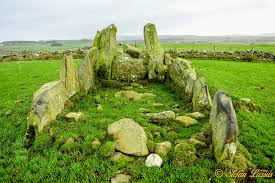 The Celtic Native Tribes did not build the Megalithic Altars in Europe, just as the Native American Tribes did not build the megaliths in America. There was an earlier Culture, with specific memes, logos, and cultural morays, that can be related through directly connecting the blatant symbolism, and coding, of the construct of the megaliths. The abundance of evidence is what this website is about. Look at the most recent discoveries and recent stories; the evidence is there. Equilateral triangles cut not granite, orientations of stones, stone-linings running straight up mountain sides, all of megalithic size, and scale, with quartz harvests in the stonework, along with celestial orientations; all present in the megalithic works. The megaliths show scientific/mathematical evidence of being present long before Celtic or Abenaki/Iroquois Tribes existed in regions where they stand. Just deal with it. The beautiful Native American tribes in the Northeast United States were seasonally nomadic, minimal in their possessions, averse to ego-driven labor and taking constant orders, and humbly simple in their technology and tools. Native Americans do not claim to have built this Altar, and they shouldn’t. The Heath Altar was built by the Megalithic Culture, the first culture on Earth.
The Celtic Native Tribes did not build the Megalithic Altars in Europe, just as the Native American Tribes did not build the megaliths in America. There was an earlier Culture, with specific memes, logos, and cultural morays, that can be related through directly connecting the blatant symbolism, and coding, of the construct of the megaliths. The abundance of evidence is what this website is about. Look at the most recent discoveries and recent stories; the evidence is there. Equilateral triangles cut not granite, orientations of stones, stone-linings running straight up mountain sides, all of megalithic size, and scale, with quartz harvests in the stonework, along with celestial orientations; all present in the megalithic works. The megaliths show scientific/mathematical evidence of being present long before Celtic or Abenaki/Iroquois Tribes existed in regions where they stand. Just deal with it. The beautiful Native American tribes in the Northeast United States were seasonally nomadic, minimal in their possessions, averse to ego-driven labor and taking constant orders, and humbly simple in their technology and tools. Native Americans do not claim to have built this Altar, and they shouldn’t. The Heath Altar was built by the Megalithic Culture, the first culture on Earth. 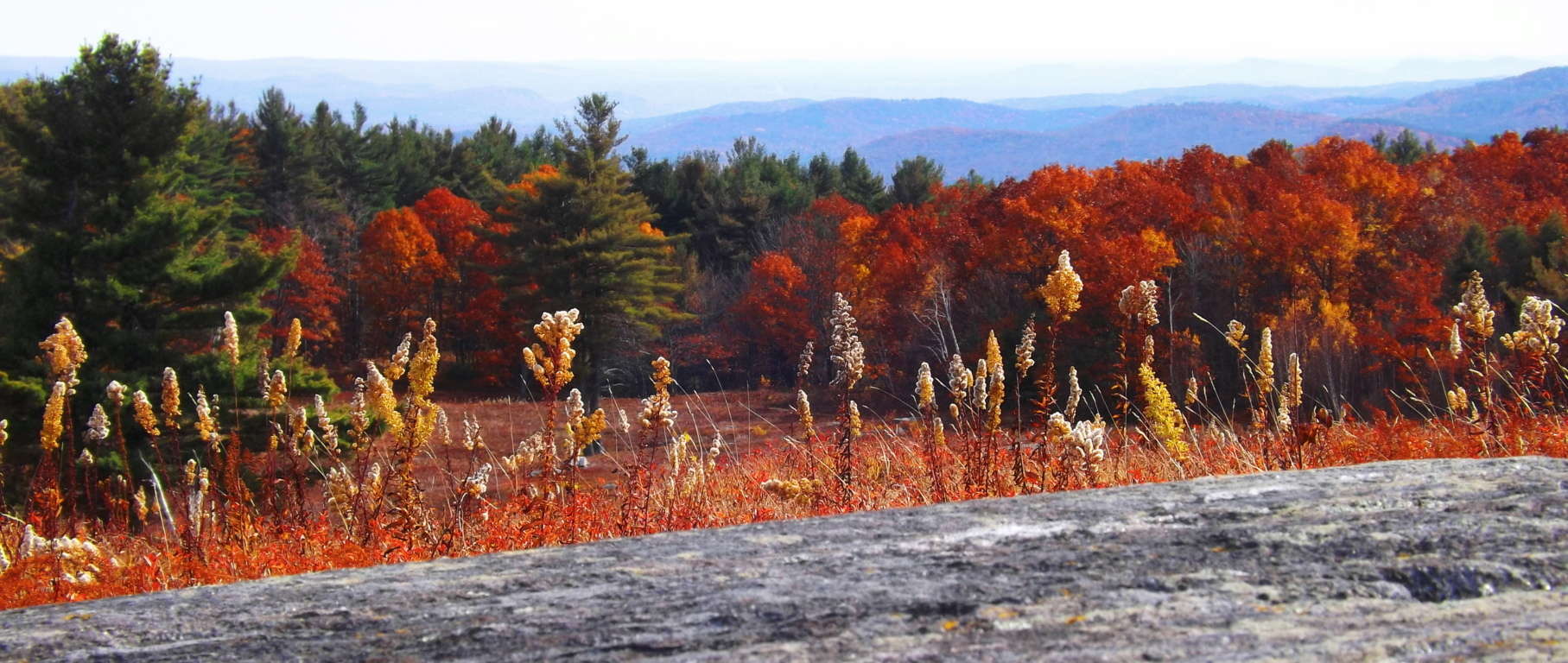 The Town of Heath: The rustic countryside on the boarder of Vermont and central Massachusetts, on the northeastern coast of the U.S, is as picturesque as any scene. Small mountains, rocky hills, Pines, Birches, and Hemlocks, all dot the landscape. The four classic seasons flux distinctly in this part of the world, with a most captivating Autumn.
The Town of Heath: The rustic countryside on the boarder of Vermont and central Massachusetts, on the northeastern coast of the U.S, is as picturesque as any scene. Small mountains, rocky hills, Pines, Birches, and Hemlocks, all dot the landscape. The four classic seasons flux distinctly in this part of the world, with a most captivating Autumn.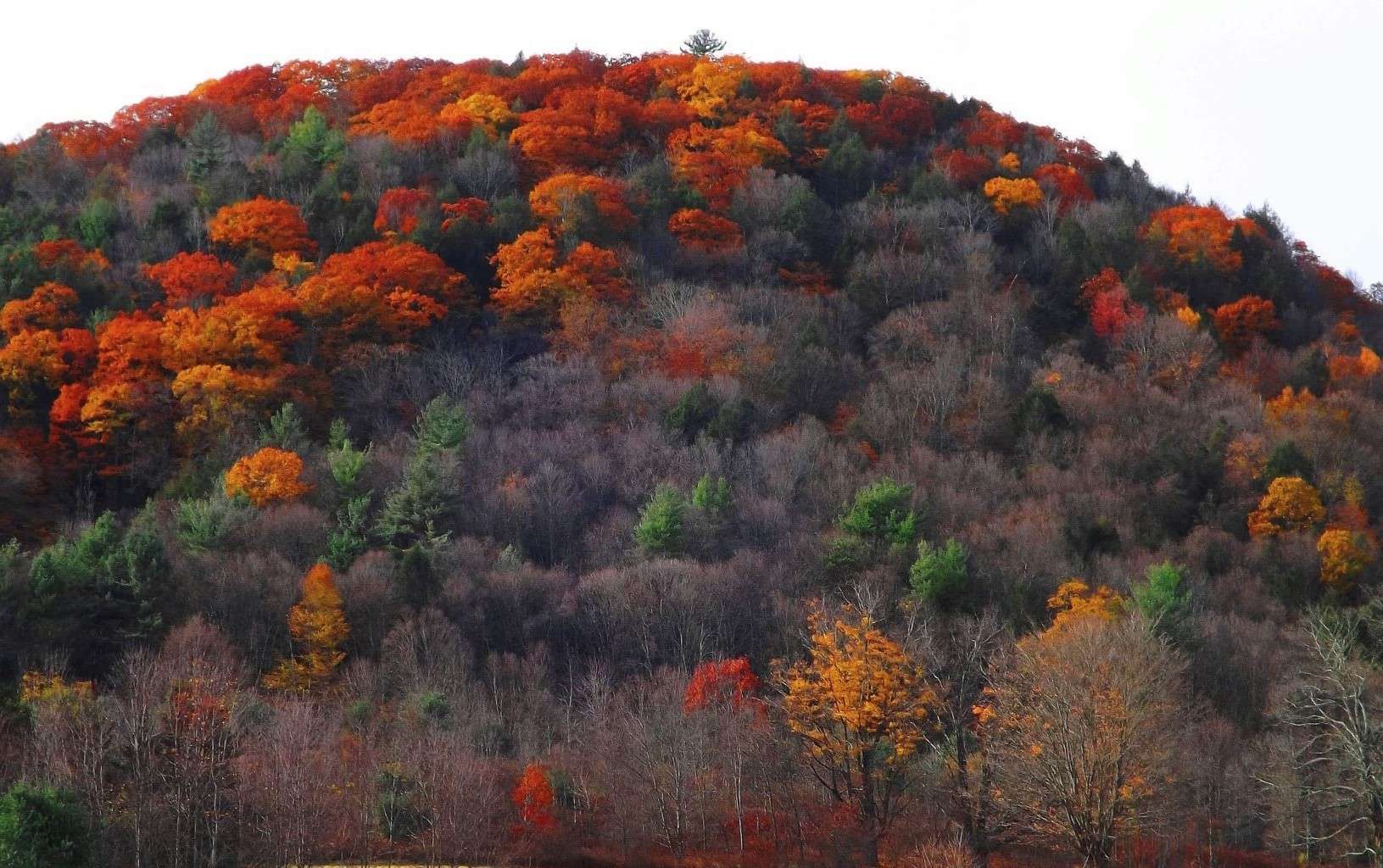 The Green Mountains of Vermont are 15 miles northwest of Heath, along with state preserved trails at Mount Watatic, Monument Mountain, Savoy Falls, and Bears Den, are all within an hour of here (and featured on this site). New England’s first layer is the Megalithic Stones and its Culture. The second layer is the Native American movements, and seasonal migrations, with minimal effect on the landscape. The third layer became the Colonial invasion, and the fourth, and most dominant layer, is of course the modern sub-urban domination of towns and small cities, uprooting and confusing the true history of the landscape in so many regions. But there are still distinct signs and works of the megalithic Culture in the untouched areas, and it is like this in many parts of the world. Where there in modernization, we find megalithic stone works.
The Green Mountains of Vermont are 15 miles northwest of Heath, along with state preserved trails at Mount Watatic, Monument Mountain, Savoy Falls, and Bears Den, are all within an hour of here (and featured on this site). New England’s first layer is the Megalithic Stones and its Culture. The second layer is the Native American movements, and seasonal migrations, with minimal effect on the landscape. The third layer became the Colonial invasion, and the fourth, and most dominant layer, is of course the modern sub-urban domination of towns and small cities, uprooting and confusing the true history of the landscape in so many regions. But there are still distinct signs and works of the megalithic Culture in the untouched areas, and it is like this in many parts of the world. Where there in modernization, we find megalithic stone works. 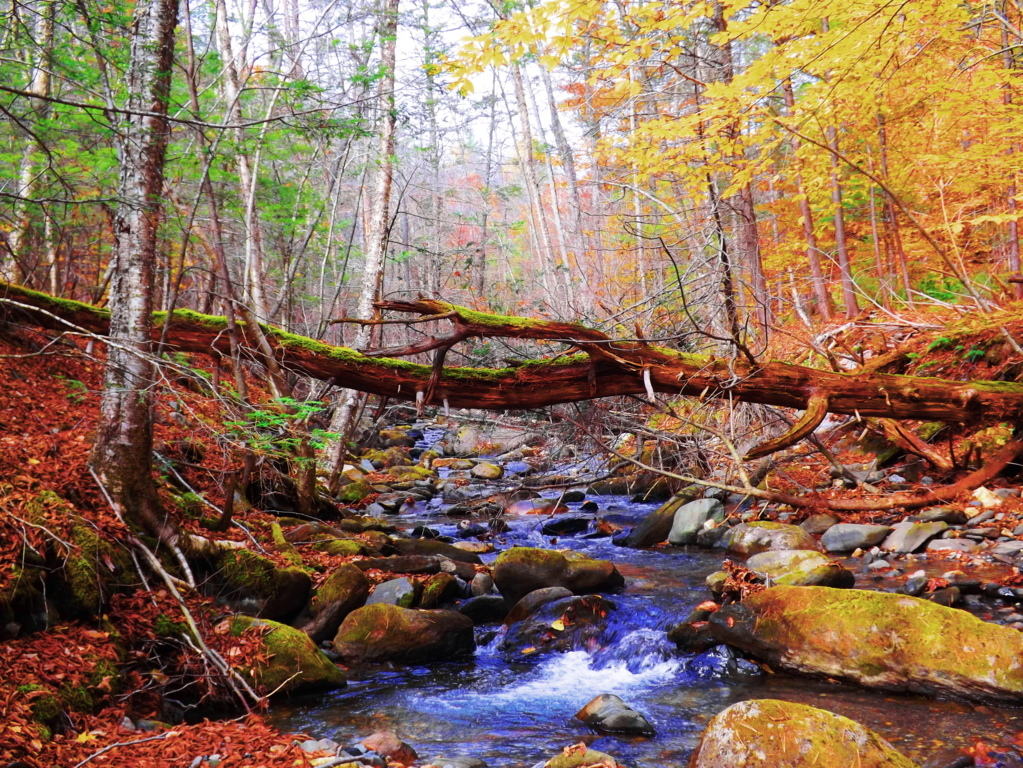 For example, along the streams approaching the area in Heath are megalithic scale irrigation walls that provide ‘pivots’ in the landscape for streams to flow by. This 12 foot high, and beautifully leveled, work of irrigation is only 4 miles from the Heath Altar, adding to the mystique of the overall area.
For example, along the streams approaching the area in Heath are megalithic scale irrigation walls that provide ‘pivots’ in the landscape for streams to flow by. This 12 foot high, and beautifully leveled, work of irrigation is only 4 miles from the Heath Altar, adding to the mystique of the overall area.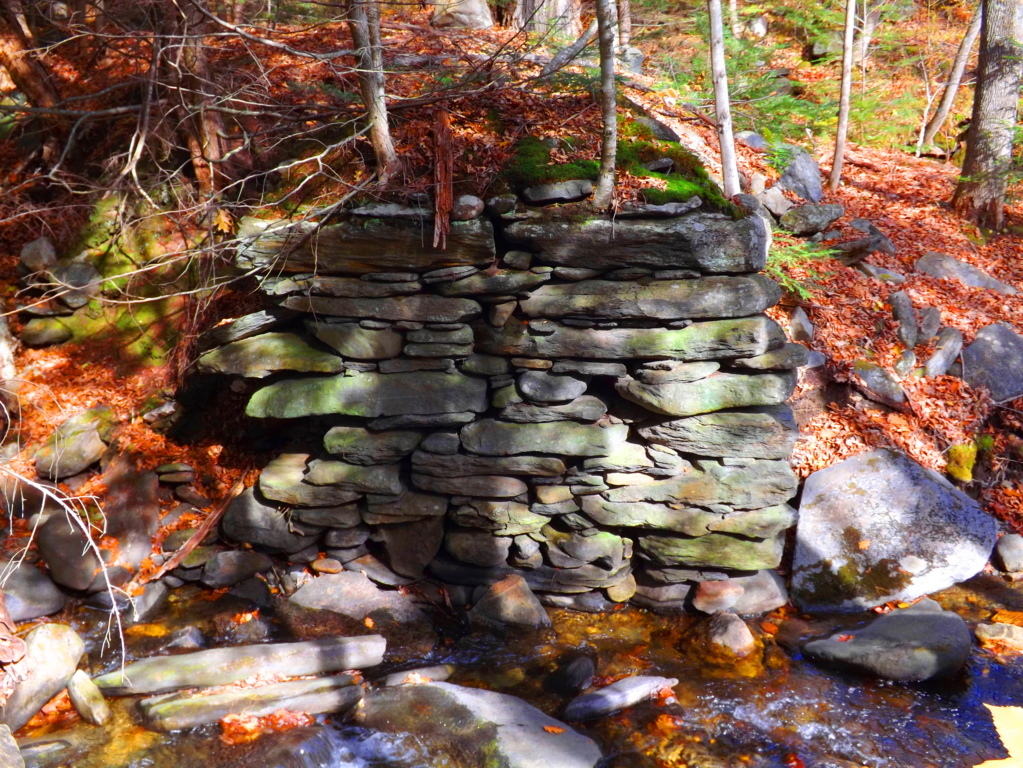 The dry rocky plateau on which the Heath Altar sits radiates hallowed vibrations. This is among the oldest cultural structures on earth. There is a loose symmetry to the scene, with a bed of flat granite at the highest point of the broad hill, guarded at each of it’s four corners by deeply incised, and notched, standing stones. The standing stones here are not flimsy, as depicted in most old articles. These are broad and intimidating megaliths, which can be seen here. (Image/Below) This is the photographic justice this site demands, capturing the grandeur of the overall area as well, not obscured images from old newspaper articles, or desperately zoomed photos from 100 yards away from fearful on-lookers. Everything about this place says Megalithic, not Colonial farmer’s “pet project”, which is what many writers and researchers would also have people attributing credit to. In the United States, the idea of colonials having possibly built these megaliths is often mentioned. It is infuriating, and totally irresponsible. Nothing about this area says ‘colonial’, or Native American, for that matter.
The dry rocky plateau on which the Heath Altar sits radiates hallowed vibrations. This is among the oldest cultural structures on earth. There is a loose symmetry to the scene, with a bed of flat granite at the highest point of the broad hill, guarded at each of it’s four corners by deeply incised, and notched, standing stones. The standing stones here are not flimsy, as depicted in most old articles. These are broad and intimidating megaliths, which can be seen here. (Image/Below) This is the photographic justice this site demands, capturing the grandeur of the overall area as well, not obscured images from old newspaper articles, or desperately zoomed photos from 100 yards away from fearful on-lookers. Everything about this place says Megalithic, not Colonial farmer’s “pet project”, which is what many writers and researchers would also have people attributing credit to. In the United States, the idea of colonials having possibly built these megaliths is often mentioned. It is infuriating, and totally irresponsible. Nothing about this area says ‘colonial’, or Native American, for that matter.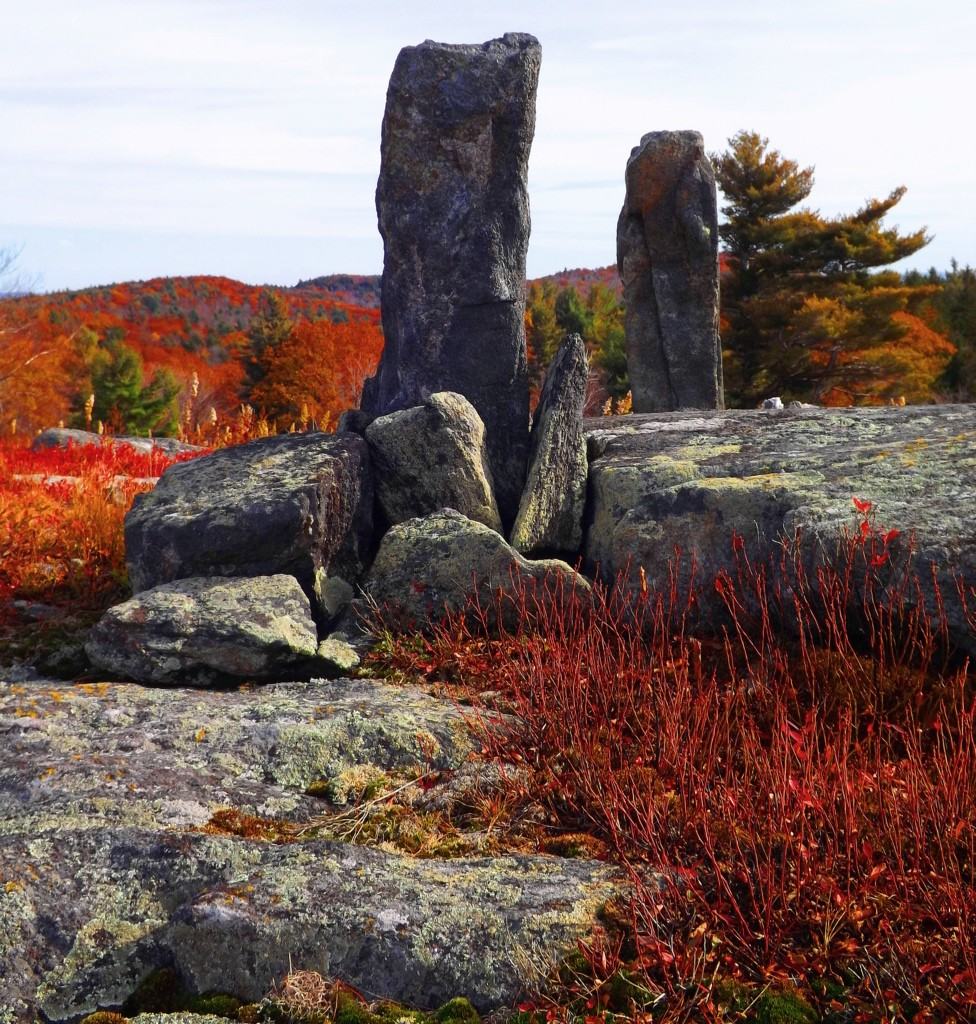 The standing stones are each about 6 feet in height, and a single foot in width. Just beyond the Altar is a fifth standing stone that serves as a kind of head-stone. The ‘stone table’ may have served to support a bonfire, or perhaps it was more of a literal ‘large table’, used for sacrificial rites, or skinning hunted game. Whatever happened at this spot, the builders of this place made it distinct, so it is clear that this was considered a sacred place.
The standing stones are each about 6 feet in height, and a single foot in width. Just beyond the Altar is a fifth standing stone that serves as a kind of head-stone. The ‘stone table’ may have served to support a bonfire, or perhaps it was more of a literal ‘large table’, used for sacrificial rites, or skinning hunted game. Whatever happened at this spot, the builders of this place made it distinct, so it is clear that this was considered a sacred place. Radiating away from the Altar are smaller standing stones.
Radiating away from the Altar are smaller standing stones.
Smaller Standing Stones near by: Here is look at a smaller white marble, 3 feet tall standing stone, almost 50 yards from the top of the hill. Stones like this may have served as a boundary, or warning stone, for others approaching the Alter. It is obvious that this particular stone was also chosen for its beauty.There is also a distinct possibility that these smaller stones are celestially oriented. 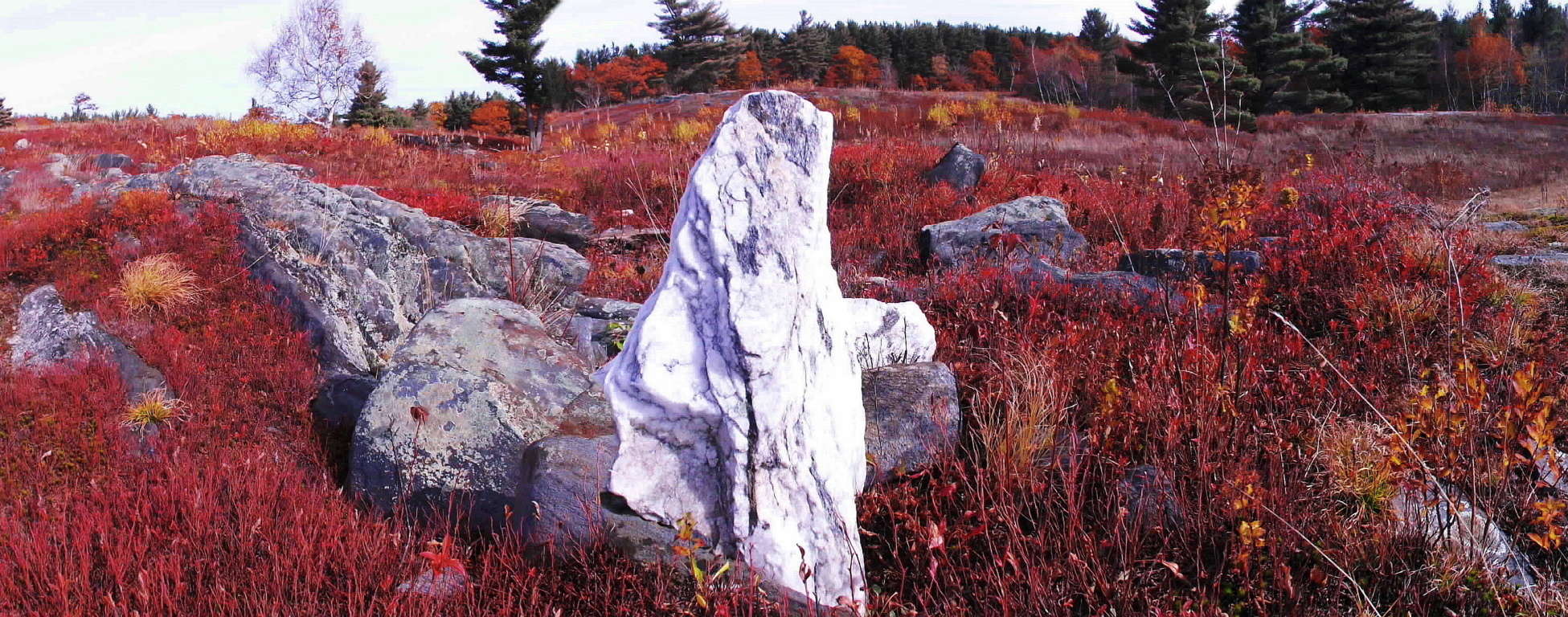 In another area away from the Altar site, possibly fixed to the northerly cardinal direction, sits another standing stone, deep in the ground, and somewhat tilted. This one looks to have been about 8 feet long, although only about 3 feet is above ground, with a darker colored rock face pointing towards Vermont.
In another area away from the Altar site, possibly fixed to the northerly cardinal direction, sits another standing stone, deep in the ground, and somewhat tilted. This one looks to have been about 8 feet long, although only about 3 feet is above ground, with a darker colored rock face pointing towards Vermont. Facing cardinal South is another amazing standing stone that has a 45 degree angular cut, with an ‘arrowhead top’, standing roughly 3 feet high, and 6 inches thick. (Second Image/Below/White Color) This particular type of stone can be found in other parts of New England as well, supporting the idea that it is a singular megalithic culture that occupied this natural space. Pictured below is a massive 45 degree angle New England standing stone with the exact same dimensions as the smaller Heath standing stone. The area that the smaller Heath standing stone is directs our attention to is gorgeous.
Facing cardinal South is another amazing standing stone that has a 45 degree angular cut, with an ‘arrowhead top’, standing roughly 3 feet high, and 6 inches thick. (Second Image/Below/White Color) This particular type of stone can be found in other parts of New England as well, supporting the idea that it is a singular megalithic culture that occupied this natural space. Pictured below is a massive 45 degree angle New England standing stone with the exact same dimensions as the smaller Heath standing stone. The area that the smaller Heath standing stone is directs our attention to is gorgeous.  The trees here are stunning at this time of year. Notice also that even the flat granite stones along the ground seem to have been leveled and cut on their sides. The amount of cultural stonework happening here gives the area a type of energy, perhaps like at the Hill of Tara in Ireland, or at the Avebury stone circle in England. The feeling is just overwhelming that someone, a very long time ago, loved this place enough to mark it out in amazingly playful way, with massive stones, that would remain forever.
The trees here are stunning at this time of year. Notice also that even the flat granite stones along the ground seem to have been leveled and cut on their sides. The amount of cultural stonework happening here gives the area a type of energy, perhaps like at the Hill of Tara in Ireland, or at the Avebury stone circle in England. The feeling is just overwhelming that someone, a very long time ago, loved this place enough to mark it out in amazingly playful way, with massive stones, that would remain forever. 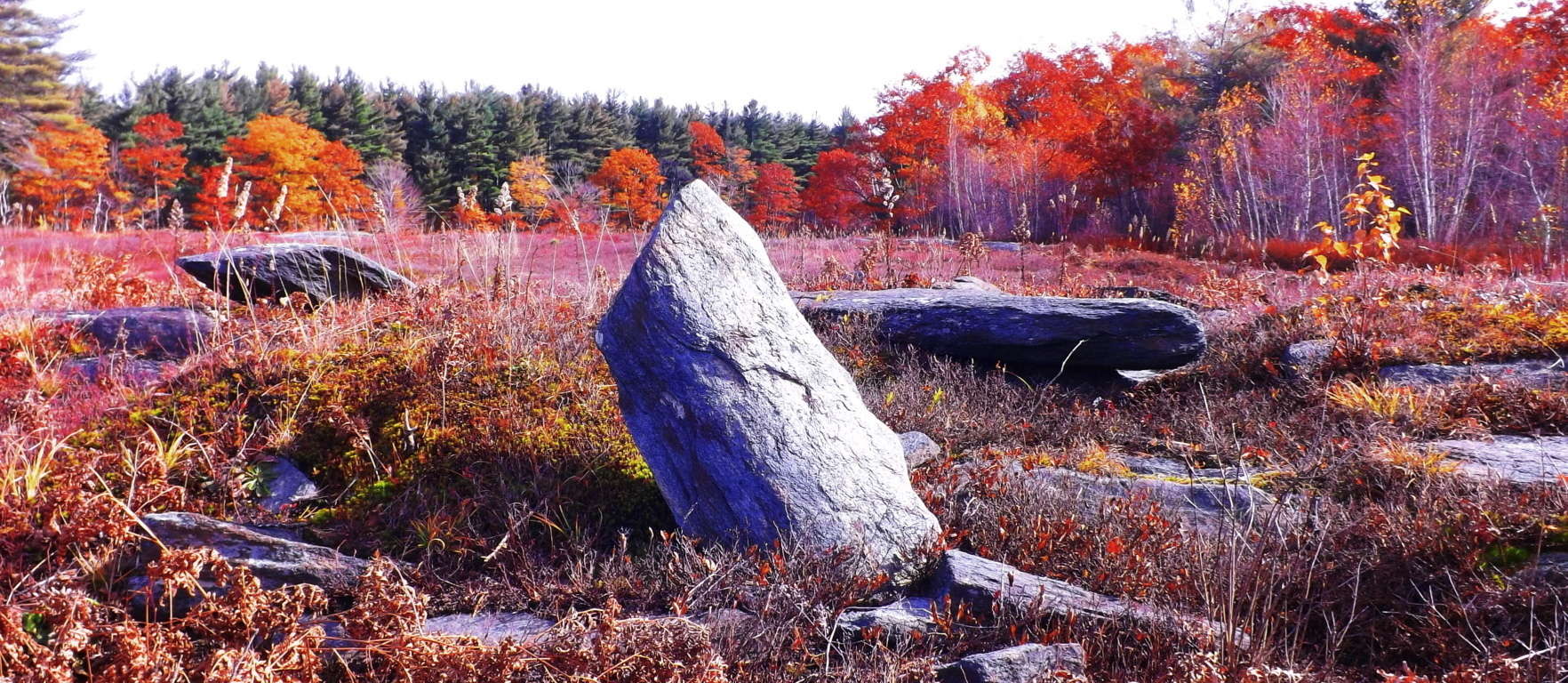 Quartz stones and classic stone-linings: The energy-storing and transferring properties of quartz are well known. Also on this sacred rocky plateau sits one of the most abundant quartz faces in all of New England. The surreal vision it creates against the dry red brush is striking, looking almost like snow. This a clear quartz concentration or harvest, which is very similar to many megalithic areas in Europe.
Quartz stones and classic stone-linings: The energy-storing and transferring properties of quartz are well known. Also on this sacred rocky plateau sits one of the most abundant quartz faces in all of New England. The surreal vision it creates against the dry red brush is striking, looking almost like snow. This a clear quartz concentration or harvest, which is very similar to many megalithic areas in Europe.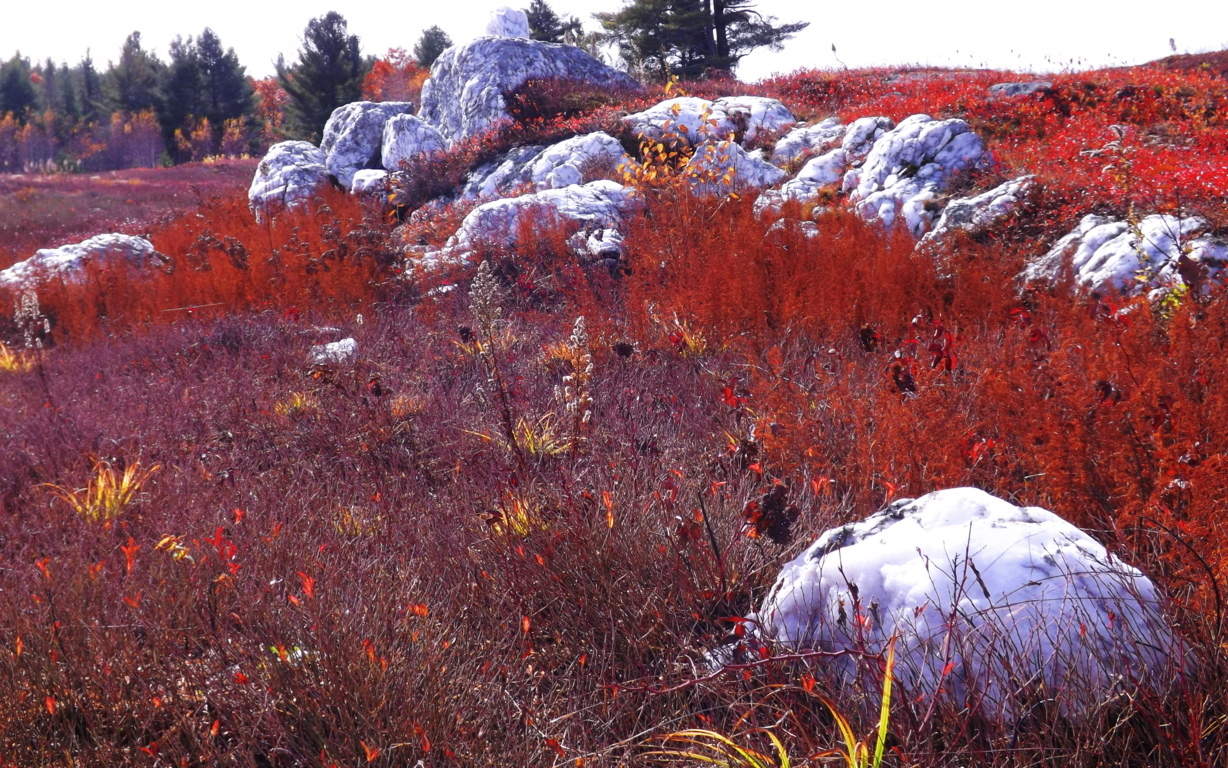 If quartz boulders are purposely scattered throughout the area, it would make sense that this place is a designed kind of ‘energy center’,with quartz absorbing energy from the Sun and connecting stones. This piece below looks to weigh at least half a ton, set proudly above a cut granite slab, near the Heath Altar.
If quartz boulders are purposely scattered throughout the area, it would make sense that this place is a designed kind of ‘energy center’,with quartz absorbing energy from the Sun and connecting stones. This piece below looks to weigh at least half a ton, set proudly above a cut granite slab, near the Heath Altar. 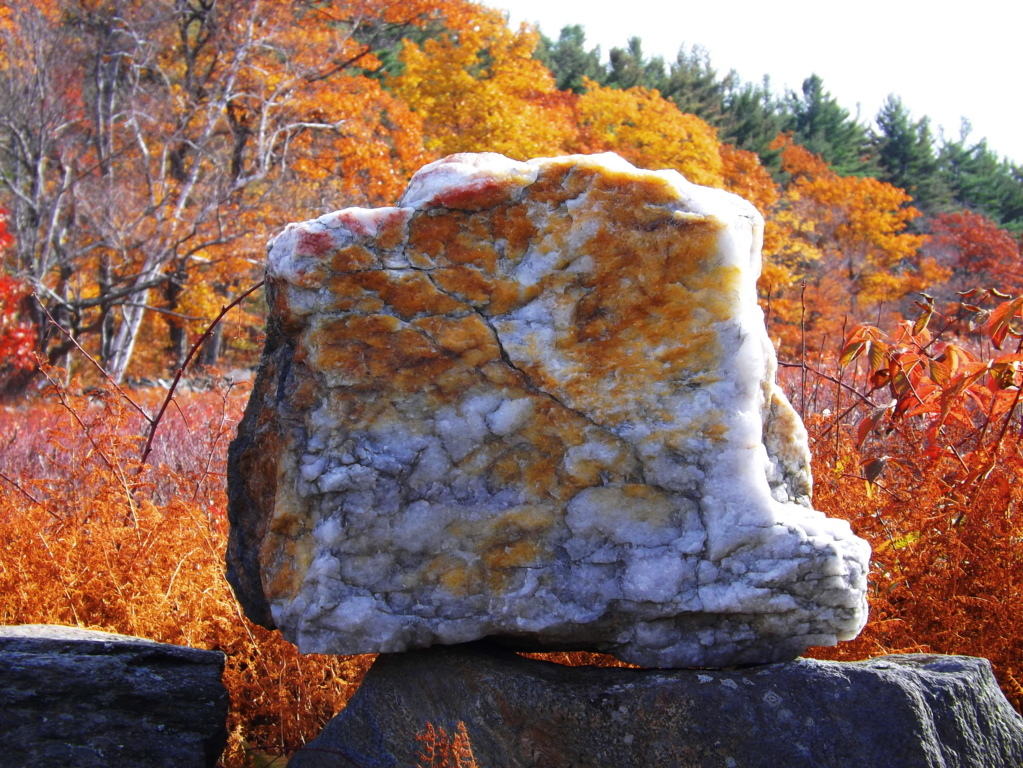 It’s as if megalithic anthropological sites are revealing a knowledge of the properties of stones. If this is true, then this entire area is a type of engineered energy center. Further to the north are classic stone-linings running through the area. These can be found in Cavan Burren National Park in a very similar style, connecting peaks, from hill top to hill top. There are enough of these linings in New England to circle the earth six times, with probably just as many in Ireland and England. This is a monument larger than the great pyramid, simply laid out in a different format. Native Americans mention nothing of building stone-linings enough times to circle the Earth 6 times. Not a word. Someone else did this colossal work.
It’s as if megalithic anthropological sites are revealing a knowledge of the properties of stones. If this is true, then this entire area is a type of engineered energy center. Further to the north are classic stone-linings running through the area. These can be found in Cavan Burren National Park in a very similar style, connecting peaks, from hill top to hill top. There are enough of these linings in New England to circle the earth six times, with probably just as many in Ireland and England. This is a monument larger than the great pyramid, simply laid out in a different format. Native Americans mention nothing of building stone-linings enough times to circle the Earth 6 times. Not a word. Someone else did this colossal work. 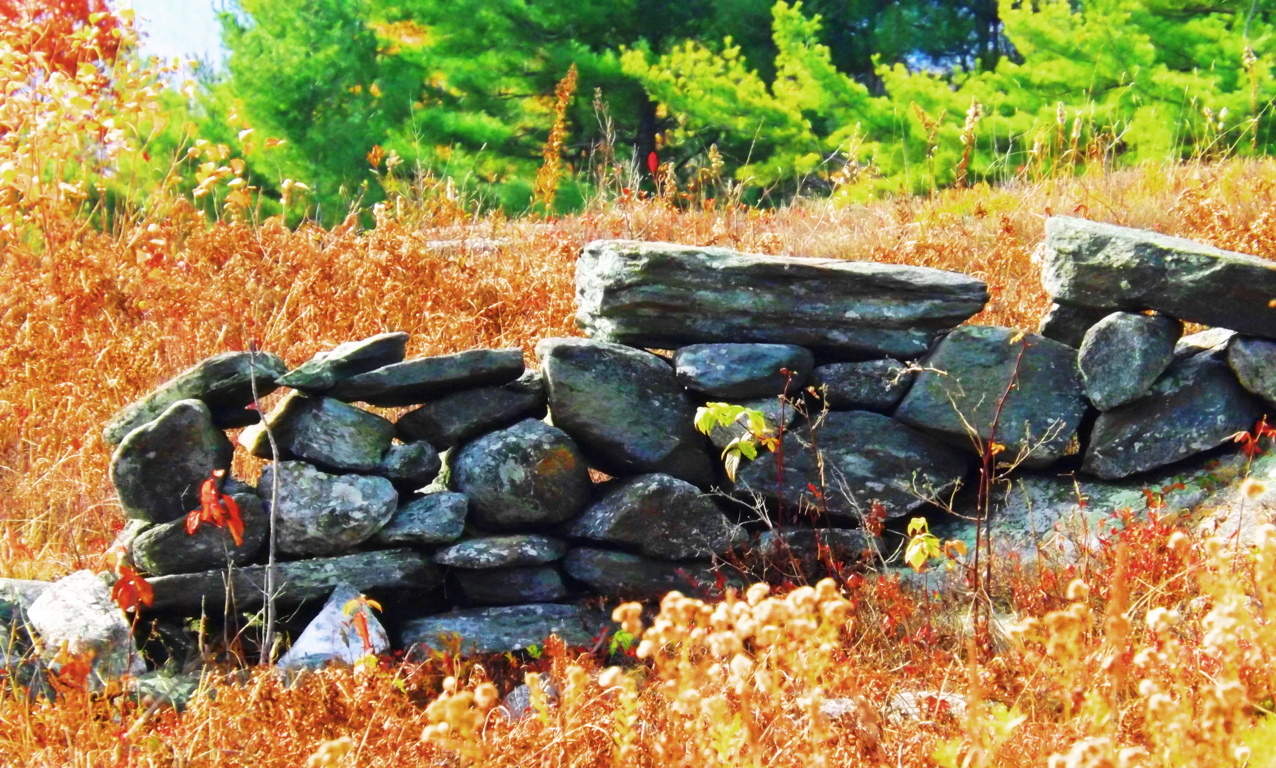 Megalithic New England: There are beautiful subtleties to understand about this place. The elevation of the rocky hill; the distance to the tree’s below, the Altar in the high clearing; as well as the fauna of the tall reeds, mingling with the stones, looking like so many other megalithic zones in Europe. Take a look at the overall similarity between this hill in Heath, and the hill top above Kinnitty Forest in Ireland, where stone-linings and irrigation walls exist in the landscape as well. (Images/Below) It’s as if the landscapes are paternal twins, with exactly similar scaling, with just the different colors to distinguish them. The elevations and patterns of sacred Neolithic places are similar because it was a similar Culture that built them.
Megalithic New England: There are beautiful subtleties to understand about this place. The elevation of the rocky hill; the distance to the tree’s below, the Altar in the high clearing; as well as the fauna of the tall reeds, mingling with the stones, looking like so many other megalithic zones in Europe. Take a look at the overall similarity between this hill in Heath, and the hill top above Kinnitty Forest in Ireland, where stone-linings and irrigation walls exist in the landscape as well. (Images/Below) It’s as if the landscapes are paternal twins, with exactly similar scaling, with just the different colors to distinguish them. The elevations and patterns of sacred Neolithic places are similar because it was a similar Culture that built them. 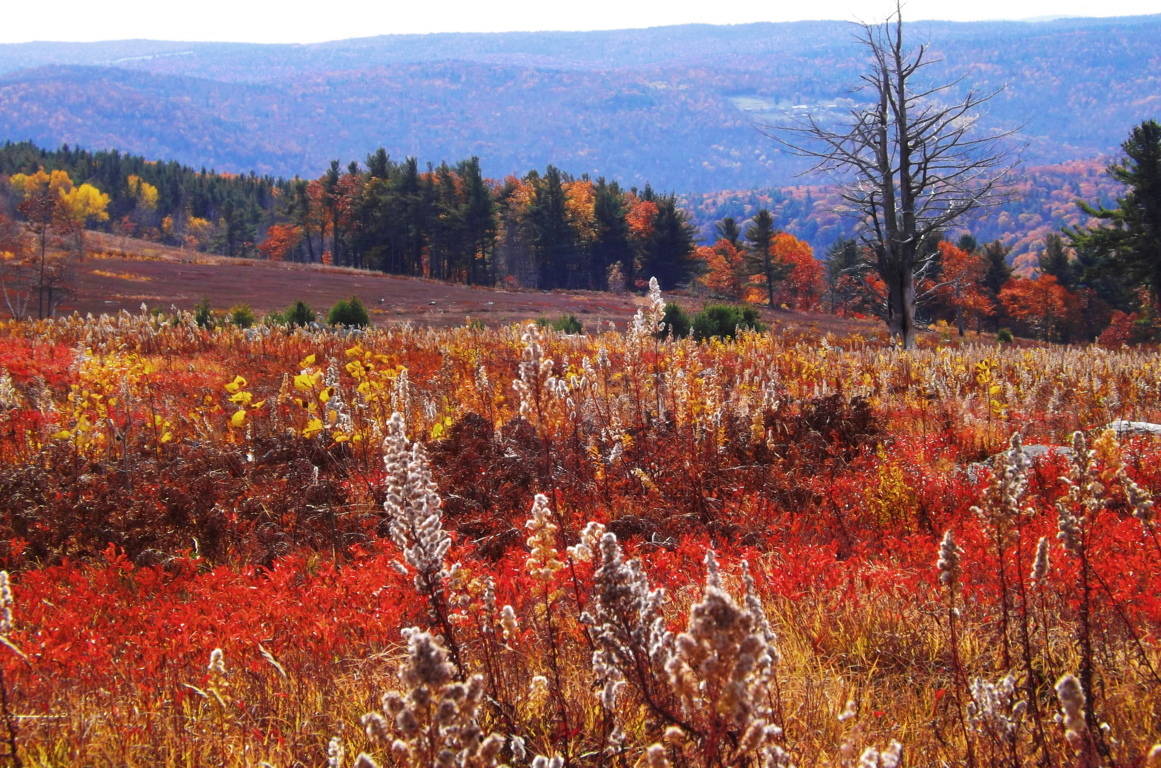 Heath Hilltop (Image/Above)
Heath Hilltop (Image/Above)
 Here is the hilltop at Kinnitty (Image/Above)
Here is the hilltop at Kinnitty (Image/Above)
Summary: Look at all these features at Heath. It’s overwhelming, and obviously a Megalithic Cultural center. Once upon a time these advantageous vistas were chosen by a Megalithic culture. They were absolutely of the same mind, as to what areas were worth inhabiting. The similarity of these chosen areas, the elevations, the circumference of the rocky clearings, the distance to the running streams, and the types of stone being utilized as megalithic, all reveal compelling evidence towards a single ancient Culture, present both in the American Northeast, and the ancient European hills. The Heath Altar Stones are a direct anthropological connection to the Megalithic world, and yet this information is considered ‘alternative‘. It’s absurd when seen first hand, what the academics are clearly ignoring. There is an energy and beauty in central Massachusetts that is on-par with any of the preserved pastoral natural spaces of the European Megalithic world. All it takes is an exploratory hike in the forests and rocky hills of Heath, and you will see, and feel, it for yourself. And that is the more important point, to see it, and feel it for yourself. Don’t let anyone tell you what something is before analyzing it for yourself, or it won’t be long before not one of your ideas will actually be your own. When you find a sacred place, it reveals the sacred potential in you. Go for it.